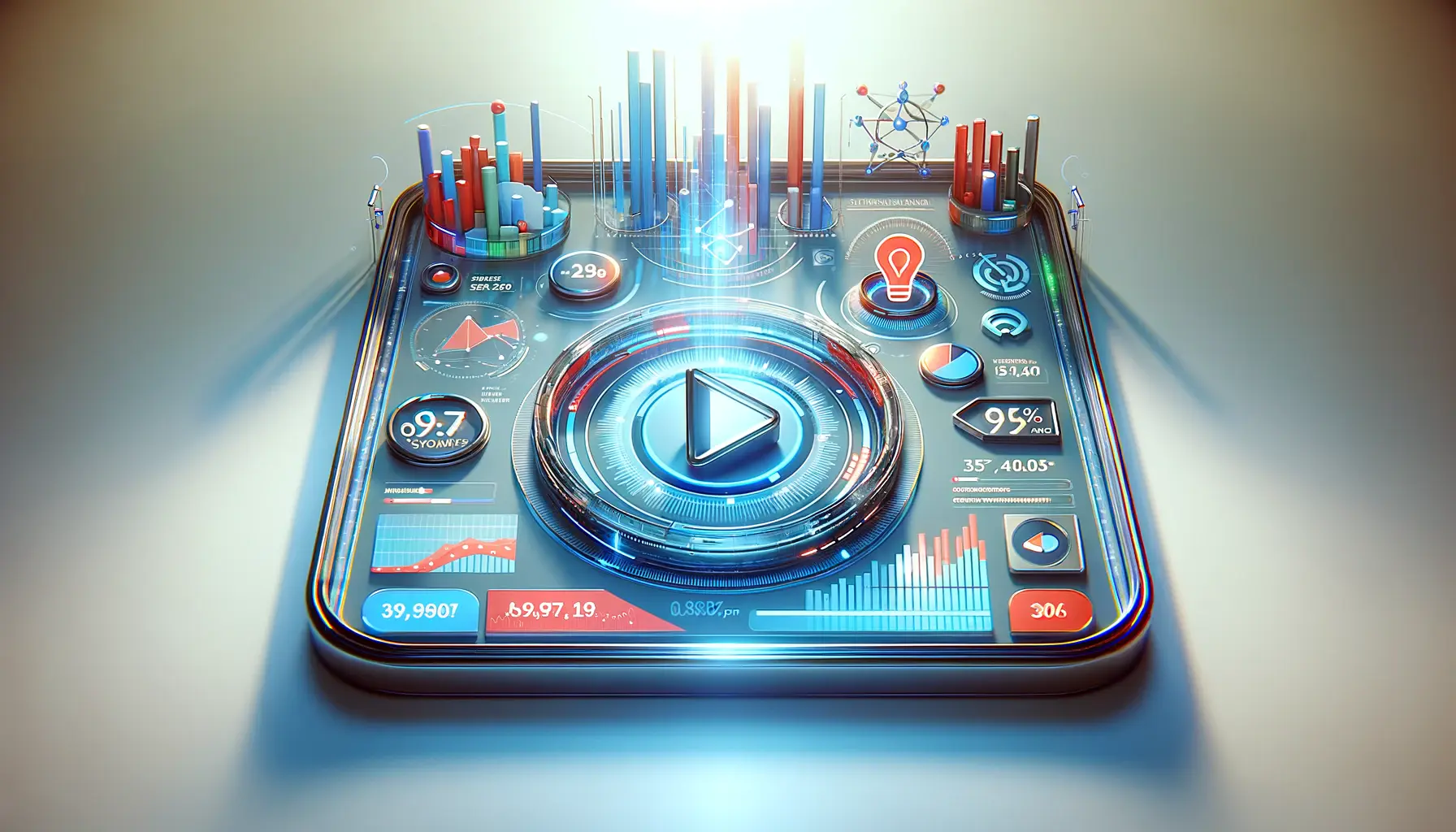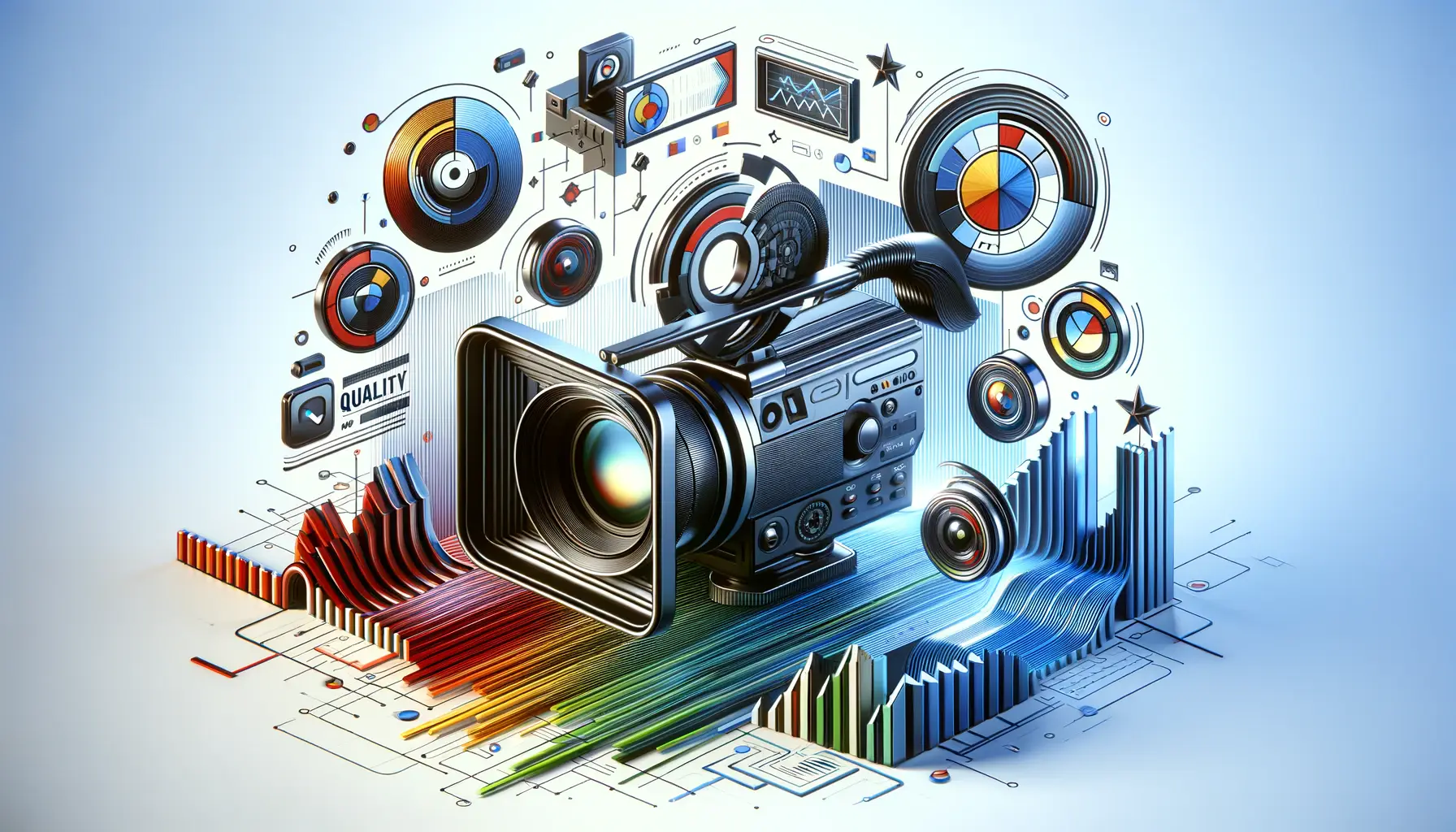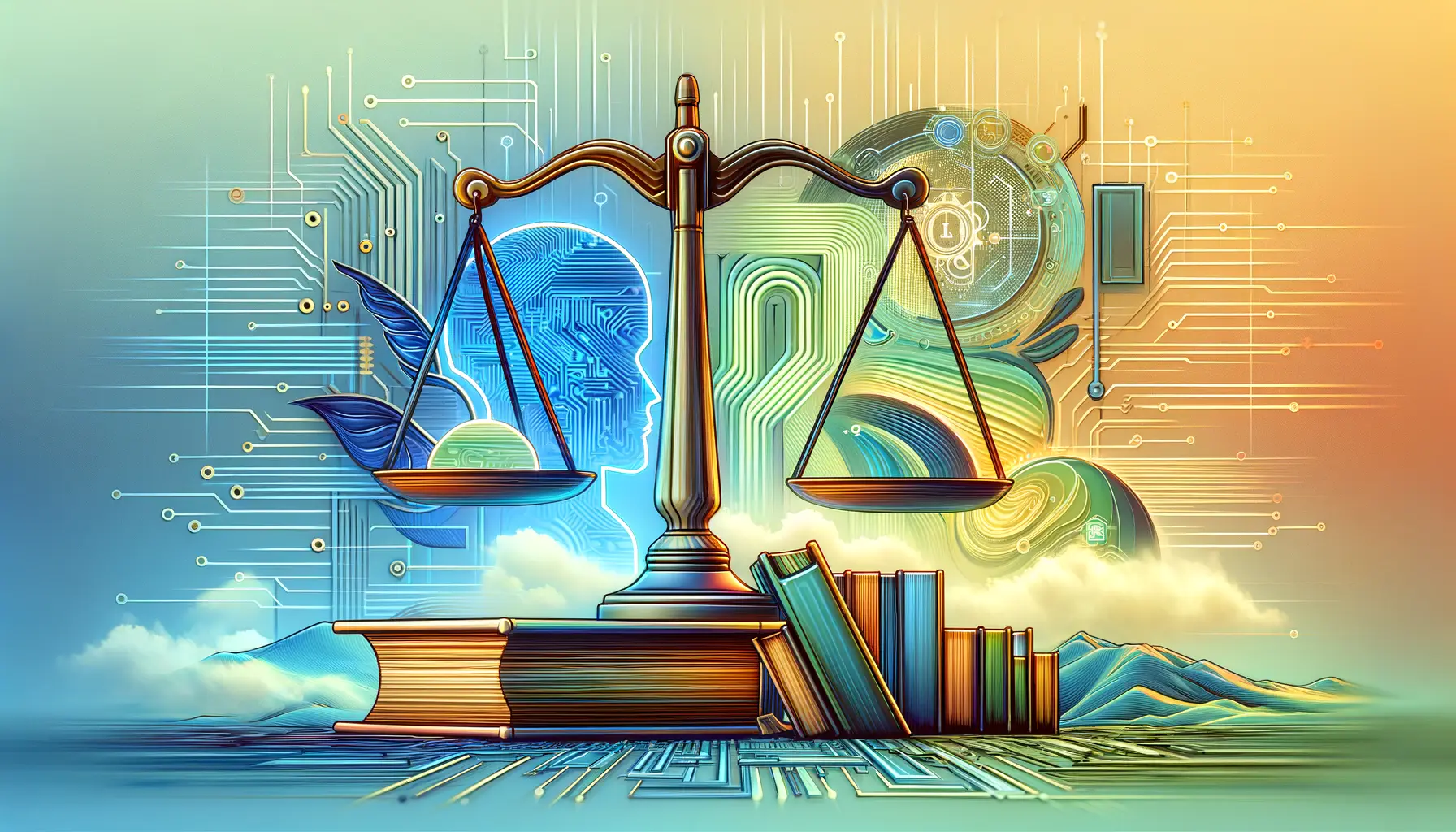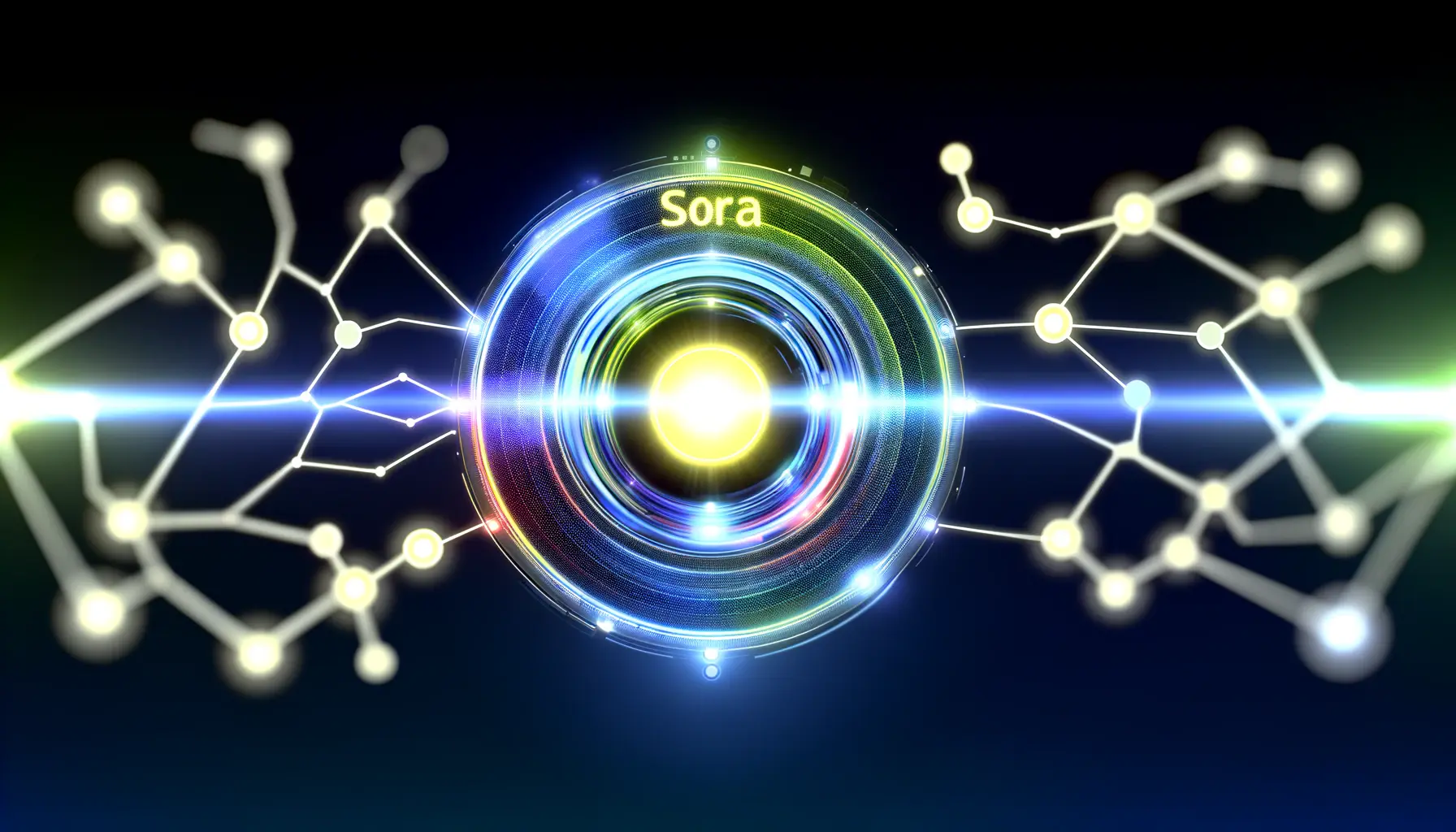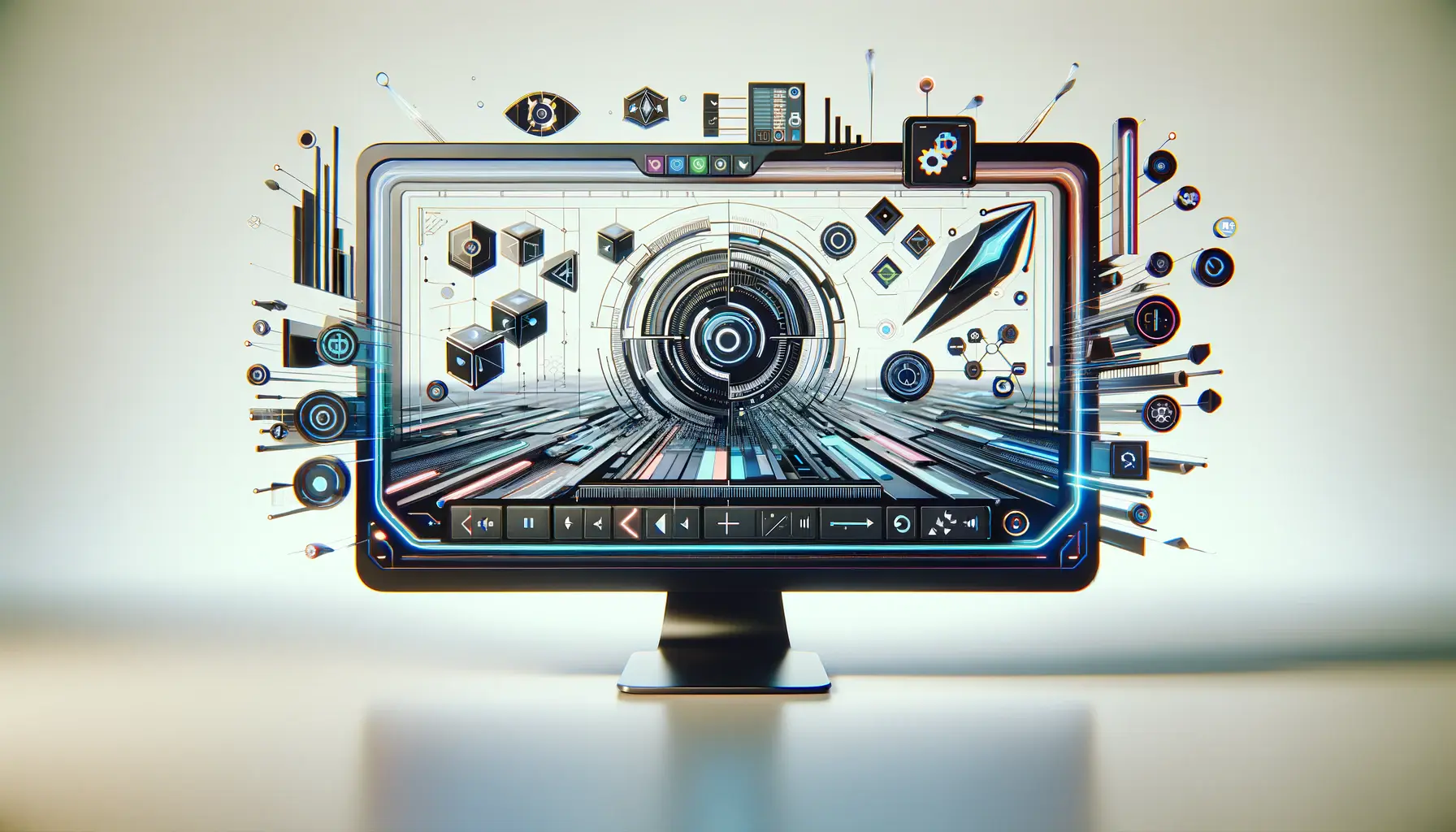The digital landscape is continuously evolving, with innovations like OpenAI’s Sora reshaping how we conceive and consume video content.
This groundbreaking tool, capable of generating photorealistic scenes from detailed prompts, not only showcases the pinnacle of artificial intelligence capabilities but also opens new avenues for marketers and content creators alike.
The success of video campaigns, especially those generated by AI technologies such as Sora, hinges on a multitude of factors that go beyond traditional metrics.
Understanding these elements is crucial in leveraging Sora’s full potential to create engaging, impactful video content.
In the realm of OpenAI’s Sora, the definition of success extends beyond views and engagement rates.
It encompasses the quality of generated content, the alignment with user prompts, and the overall impact on the target audience.
As we delve into the intricacies of measuring the success of Sora-generated video campaigns, it becomes apparent that a nuanced approach is required—one that appreciates the technological marvel behind Sora while focusing on the strategic implementation of this tool in video marketing strategies.
- Understanding Sora’s Impact on Video Marketing
- Strategies for Optimizing Sora-Generated Content
- Engagement Tactics for Sora-Generated Videos
- Analytics and Performance Measurement
- Future Trends in AI-Generated Video Content
- Challenges and Solutions in AI-Generated Video Production
- Maximizing Audience Engagement Through Storytelling
- Embracing the Future of Video Marketing with Sora
- FAQs on Sora-Generated Video Campaigns
Understanding Sora’s Impact on Video Marketing
The Evolution of Video Content Creation
The advent of AI-generated video content, spearheaded by tools like Sora, marks a significant milestone in the evolution of video marketing.
Traditionally, creating high-quality video content required substantial resources, including skilled professionals and significant time investments.
Sora, however, democratizes this process by enabling users to generate videos from text prompts, significantly reducing the barriers to entry for high-quality video production.
This shift not only accelerates the content creation process but also opens up creative possibilities that were previously inconceivable without extensive production budgets.
The implications of Sora’s capabilities extend far beyond efficiency and cost-effectiveness.
They introduce a new paradigm where the creativity of the campaign is limited only by the imagination of the content creator.
The ability to generate photorealistic scenes and narratives through simple text prompts empowers marketers to experiment with diverse storytelling techniques, enhancing the emotional and visual appeal of their video campaigns.
Key Metrics for Measuring Success
Measuring the success of Sora-generated video campaigns requires a departure from traditional video metrics.
While views, engagement, and conversion rates remain important, the unique nature of AI-generated content calls for additional considerations.
Metrics such as the fidelity of the generated content to the initial prompt, the innovation in storytelling, and the overall user experience play a crucial role in evaluating success.
These metrics not only reflect the effectiveness of the video in engaging the audience but also the ability of the AI to accurately interpret and visualize the content creator’s vision.
Another critical aspect of measuring success is the audience’s perception of AI-generated content.
Understanding viewer sentiment towards videos created by Sora can provide valuable insights into the acceptance and impact of AI in content creation.
Surveys, feedback forms, and social media sentiment analysis are tools that marketers can use to gauge the audience’s response, offering a more comprehensive view of the campaign’s success beyond quantitative metrics.
The success of Sora-generated video campaigns hinges on innovative metrics that reflect the unique capabilities and challenges of AI-driven content creation.
Strategies for Optimizing Sora-Generated Content
In the rapidly evolving world of AI-generated video content, mastering the art of optimization is key to maximizing the impact of Sora-generated campaigns.
The process involves a blend of creativity, strategic planning, and a deep understanding of the platform’s capabilities.
By fine-tuning various aspects of video production and distribution, marketers can significantly enhance the effectiveness of their campaigns, ensuring that they not only capture but also retain audience attention.
Optimization strategies for Sora-generated content encompass a wide range of techniques, from the initial conceptualization of the video to its final presentation to the target audience.
Below, we explore several critical areas where focused efforts can yield substantial improvements in campaign performance.
Enhancing Narrative with AI
The cornerstone of any successful video campaign is a compelling narrative.
With Sora, creators have the unique opportunity to craft stories that are not only engaging but also highly customized to their audience’s preferences.
To optimize content, it’s essential to:
- Experiment with different storytelling formats and styles to find what resonates best with your target audience.
- Utilize Sora’s capabilities to create dynamic, visually appealing scenes that complement the narrative and enhance the overall message.
- Integrate user feedback and preferences into the content creation process, allowing for a more personalized and impactful viewing experience.
Targeting and Personalization
Another key aspect of optimizing Sora-generated video campaigns is targeting and personalization.
AI-generated content opens up new possibilities for creating highly targeted videos that speak directly to the interests and needs of specific audience segments.
Strategies include:
- Segmenting your audience based on demographics, interests, and behavior to tailor your video content more precisely.
- Leveraging data analytics to understand viewer preferences and incorporating these insights into video creation for more personalized content.
- Testing different versions of your videos across various audience segments to identify the most effective approaches and refine your targeting strategies.
Technical Optimization for Maximum Reach
Ensuring that Sora-generated videos are technically optimized is crucial for enhancing their visibility and engagement.
This involves:
- Optimizing video titles, descriptions, and tags with relevant keywords to improve searchability and reach on video-sharing platforms.
- Ensuring videos are formatted correctly for different platforms, considering aspect ratios, resolution, and other technical specifications to provide the best viewing experience across devices.
- Utilizing analytics tools to monitor video performance, identify areas for improvement, and make data-driven decisions to optimize future campaigns.
Leveraging Sora’s AI capabilities for narrative enhancement, audience targeting, and technical optimization can significantly boost the success of video marketing campaigns.
Engagement Tactics for Sora-Generated Videos
Engagement is the lifeblood of any successful video marketing campaign.
In the context of Sora-generated videos, engagement not only measures the ability of content to captivate and retain audience attention but also reflects the effectiveness of AI in creating relatable and compelling narratives.
To elevate engagement levels, marketers must employ a variety of tactics, ensuring that each video not only reaches its intended audience but also resonates with them on a deeper level.
Below are strategies designed to maximize engagement with Sora-generated video content, leveraging both the unique capabilities of AI and the principles of effective video marketing.
Creating Interactive Video Experiences
- Integrate interactive elements such as quizzes, polls, and call-to-action buttons within your videos to encourage viewer participation and increase engagement.
- Use Sora’s AI to tailor these interactive components to the viewer’s preferences and past interactions, creating a more personalized and engaging experience.
Utilizing Social Media Platforms
- Share your Sora-generated videos across multiple social media platforms to maximize exposure and tap into diverse audience segments.
- Encourage viewers to share their thoughts, feedback, and how the video resonates with them, fostering a community around your content.
- Leverage platform-specific features, such as Instagram Stories or TikTok challenges, to promote your videos in creative and engaging ways.
Enhancing Viewer Retention
- Focus on the first few seconds of your video to grab attention immediately. Use Sora’s capabilities to create visually striking openings that promise value and intrigue.
- Structure your content to deliver consistent value throughout, keeping viewers engaged from start to finish. This includes pacing your narrative, varying visual elements, and incorporating unexpected twists or insights.
- Analyze viewer drop-off points in your videos to identify areas for improvement. Use this data to refine your content strategy and improve retention rates over time.
Engagement with Sora-generated videos hinges on creativity, interactivity, and strategic distribution. By focusing on these areas, marketers can significantly enhance the impact of their AI-driven video campaigns.
Analytics and Performance Measurement
Understanding the impact of Sora-generated video campaigns requires a comprehensive approach to analytics and performance measurement.
By closely monitoring various metrics, marketers can gain insights into how their content performs, identify areas for improvement, and make data-driven decisions to optimize future campaigns.
This analytical approach is essential for refining video marketing strategies and ensuring that investments in AI-generated content yield the highest possible return.
Key Performance Indicators (KPIs)
Identifying the right KPIs is crucial for measuring the success of video campaigns.
For Sora-generated content, traditional metrics such as views, engagement rates, and conversion rates are important, but they should be complemented with AI-specific indicators.
These might include the accuracy of the AI in interpreting prompts, the innovation in content generation, and the personalization level of the videos.
By tracking a mix of general and AI-specific KPIs, marketers can obtain a holistic view of their campaign’s performance.
Tools for Tracking and Analysis
There are numerous tools available for tracking the performance of video content, ranging from built-in analytics on social media platforms to sophisticated third-party analytics software.
Utilizing these tools effectively can provide valuable insights into viewer behavior, engagement patterns, and content performance.
Marketers should focus on integrating these tools into their analytics framework to capture and analyze data across all distribution channels.
Optimizing Based on Insights
The ultimate goal of analytics is to inform decision-making and optimize future campaigns.
Insights gained from performance data should guide adjustments in content creation, targeting, and distribution strategies.
For instance, if data indicates that certain types of stories or visual elements resonate more with the audience, future Sora-generated videos can be tailored to incorporate these preferences.
Similarly, understanding viewer drop-off points can help in structuring content more effectively to improve retention rates.
- Analyze viewer engagement trends to refine content themes and presentation styles.
- Segment audience data to enhance targeting and personalization in future campaigns.
- Test different call-to-action strategies to determine the most effective approach for driving desired viewer actions.
Effective use of analytics and performance data is key to maximizing the impact of Sora-generated video campaigns, enabling marketers to craft more engaging, personalized, and successful content.
Future Trends in AI-Generated Video Content
The landscape of video marketing is undergoing a transformative shift with the advent of AI-generated content, spearheaded by technologies like OpenAI’s Sora.
As we look to the future, several trends are emerging that promise to further revolutionize the way we create, distribute, and engage with video content.
Understanding these trends is crucial for marketers aiming to stay ahead in an increasingly competitive digital environment.
Increase in Personalization and Interactivity
One of the most significant trends is the move towards hyper-personalized and interactive video content.
AI technologies like Sora are becoming increasingly sophisticated, enabling the creation of videos that are not only tailored to the individual preferences of viewers but also allow for real-time interaction.
This level of personalization and interactivity enhances viewer engagement and offers unprecedented opportunities for brands to connect with their audience on a more personal and meaningful level.
Expansion of AI Creativity
As AI models continue to evolve, we can expect to see a significant expansion in the creative capabilities of tools like Sora.
Future iterations may offer more nuanced and complex video generation options, allowing for even greater creativity in video marketing campaigns.
This could include more detailed control over visual styles, narrative structures, and even the incorporation of real-time data into video content, opening up new avenues for dynamic and contextually relevant marketing strategies.
Integration with Other Technologies
The integration of AI-generated video content with other emerging technologies, such as augmented reality (AR) and virtual reality (VR), is another trend poised to reshape the marketing landscape.
By combining the creative power of AI with immersive technologies, marketers can create deeply engaging experiences that captivate audiences in entirely new ways.
This integration promises to blur the lines between digital and physical realities, offering innovative platforms for storytelling and brand engagement.
- Expect to see more personalized video content that adapts to viewer behavior and preferences in real-time.
- Look for advancements in AI that enable more creative and complex video production capabilities.
- Watch for the integration of AI-generated videos with AR and VR to create immersive and interactive marketing experiences.
The future of AI-generated video content is bright, with trends pointing towards increased personalization, creativity, and technological integration. Marketers who embrace these trends will be well-positioned to create compelling, innovative campaigns that resonate with their audiences.
Challenges and Solutions in AI-Generated Video Production
The integration of AI into video production, particularly through tools like OpenAI’s Sora, presents a revolutionary step forward in content creation.
However, this advancement is not without its challenges.
From technical hurdles to ethical considerations, the path to harnessing the full potential of AI-generated videos requires careful navigation.
Identifying these challenges and implementing effective solutions is crucial for marketers and content creators aiming to leverage AI technologies successfully.
Technical Limitations and Quality Control
One of the primary challenges in AI-generated video production is managing technical limitations and ensuring quality control.
While Sora and similar technologies have made significant strides, there are still constraints regarding the complexity of videos that can be generated, the realism of the output, and the AI’s ability to accurately interpret and execute detailed prompts.
To address these issues, it’s important for creators to:
- Stay updated with the latest advancements in AI video generation technology to take advantage of new features and improvements.
- Work closely with AI tools, providing detailed and clear prompts while also setting realistic expectations for the output.
- Incorporate a review and refinement process, where AI-generated content is carefully evaluated and adjusted by human creators to ensure it meets quality standards.
Ensuring Authenticity and Ethical Use
Another significant challenge is maintaining authenticity and navigating the ethical implications of AI-generated content.
As these technologies become more sophisticated, distinguishing between AI-generated and human-created content becomes increasingly difficult, raising concerns about misinformation and the potential for misuse.
Solutions include:
- Implementing transparent practices by clearly disclosing the use of AI in content creation, helping to maintain trust with the audience.
- Adhering to ethical guidelines and standards for AI-generated content, ensuring that it is used responsibly and does not contribute to misinformation or harm.
- Engaging in ongoing dialogue with industry peers, regulators, and the audience about the role of AI in content creation and the measures taken to ensure its ethical use.
Adapting to Audience Perceptions
The perception of AI-generated content by audiences is an evolving aspect that can pose both a challenge and an opportunity.
As viewers become more accustomed to AI in content creation, their expectations and acceptance levels may change.
To effectively adapt, marketers should:
- Conduct regular audience research to understand perceptions of AI-generated content and adjust strategies accordingly.
- Focus on the added value that AI brings to video content, such as enhanced personalization and creativity, to positively shape audience perceptions.
- Use feedback mechanisms to gather viewer opinions on AI-generated content and use this input to guide future content development.
Ignoring the challenges associated with AI-generated video production can undermine the effectiveness of marketing campaigns. Addressing these issues head-on with thoughtful solutions will enable marketers to fully leverage the benefits of AI while maintaining ethical standards and audience trust.
Maximizing Audience Engagement Through Storytelling
In the era of AI-generated video content, the art of storytelling remains a critical component of successful marketing campaigns.
Sora’s advanced capabilities offer unprecedented opportunities to craft narratives that are not only engaging but also deeply personalized and dynamic.
However, the challenge lies in effectively harnessing these capabilities to tell stories that resonate with audiences and foster a deep connection with the brand.
Embracing the Power of Personalization
Personalization is at the heart of modern storytelling, especially when it comes to AI-generated content.
By leveraging Sora’s ability to tailor videos to individual viewer preferences and behaviors, marketers can create narratives that speak directly to each member of their audience.
This level of personalization not only enhances engagement but also strengthens the viewer’s emotional connection to the story and, by extension, to the brand.
Strategies for achieving this include:
- Utilizing data analytics to understand audience preferences and incorporating these insights into the storytelling process.
- Experimenting with different narrative paths and story outcomes based on viewer interactions, making each video experience unique.
- Encouraging viewer feedback and incorporating suggestions into future stories, fostering a sense of community and co-creation.
Leveraging Visual and Emotional Impact
The visual and emotional impact of a story is magnified when combined with the capabilities of AI like Sora.
The ability to generate highly detailed, realistic scenes allows for the creation of visually stunning videos that can evoke strong emotional responses.
To maximize this impact, it’s essential to:
- Focus on crafting narratives that evoke universal emotions such as joy, surprise, or empathy, making the content more relatable and memorable.
- Pay close attention to the visual elements of your story, using Sora’s capabilities to create scenes that enhance the narrative and emotional impact.
- Consider the pacing and rhythm of the story, ensuring that it builds appropriately to maintain viewer interest and engagement throughout.
Building a Narrative Ecosystem
A single video is just one part of a broader narrative ecosystem.
By creating a series of interconnected stories, marketers can engage audiences over time, building anticipation and deepening the narrative experience.
This approach not only keeps viewers coming back for more but also allows for the exploration of complex themes and characters in a way that a single video cannot.
Implementing this strategy involves:
- Planning a content calendar that outlines the release of interconnected stories, ensuring a consistent and engaging narrative flow.
- Using feedback and engagement data from earlier videos to refine and adapt the narrative direction of future content.
- Exploring different narrative formats, such as episodic series, alternate realities, or user-driven story paths, to maintain viewer interest and engagement.
The fusion of AI capabilities with traditional storytelling techniques offers a powerful tool for engaging audiences. By focusing on personalization, emotional impact, and narrative ecosystems, marketers can create AI-generated video content that not only captures attention but also fosters a lasting connection with their audience.
Embracing the Future of Video Marketing with Sora
The journey through the intricacies of measuring and maximizing the success of Sora-generated video campaigns reveals a landscape rich with opportunities and challenges.
As we’ve explored, the advent of AI in video marketing, particularly through OpenAI’s Sora, offers unprecedented capabilities for creativity, personalization, and engagement.
Yet, harnessing these capabilities requires a nuanced understanding of both the technology and the evolving dynamics of audience interaction.
The Path to Success
Success in this new era is multifaceted, encompassing not just traditional metrics of views and engagement but also the depth of viewer connection and the innovative use of AI capabilities.
The strategies outlined, from optimizing content and enhancing engagement to leveraging analytics and embracing future trends, provide a roadmap for marketers aiming to navigate this terrain effectively.
However, the journey doesn’t end here.
Continuous learning, experimentation, and adaptation are key to staying ahead in the rapidly evolving landscape of AI-generated content.
Key Takeaways for Marketers
- Personalization and interactivity are not just trends but essential elements for engaging modern audiences with Sora-generated content.
- Storytelling remains at the heart of effective video marketing, with AI offering new tools to enhance narrative depth and emotional resonance.
- Challenges such as technical limitations, ethical considerations, and audience perceptions require ongoing attention and innovative solutions.
In conclusion, the success of Sora-generated video campaigns hinges on a delicate balance between leveraging cutting-edge AI capabilities and adhering to timeless marketing principles.
As we look to the future, the potential for AI to transform video marketing is boundless, promising a new era of creativity, engagement, and personalization.
For marketers willing to embrace these changes, the opportunities are as limitless as the narratives they can create with tools like Sora.
The key to unlocking this potential lies in understanding the technology, listening to the audience, and crafting stories that resonate on a deeply human level.
FAQs on Sora-Generated Video Campaigns
Explore common questions about leveraging OpenAI’s Sora for video marketing.
Sora is an AI by OpenAI that generates photorealistic videos from text prompts, transforming digital storytelling.
Sora enables the creation of highly detailed, customized videos, offering a new level of engagement and creativity in marketing.
Yes, Sora can transform detailed text prompts into convincing, high-definition video clips, broadening creative horizons.
Their ability to produce complex scenes and camera motions from simple prompts sets Sora-generated videos apart.
Sora can generate videos up to a minute long, featuring intricate scenes and dynamic storytelling elements.
Success is measured by engagement rates, viewer feedback, and the innovative use of Sora’s capabilities in storytelling.
Technical limitations and ensuring authenticity are challenges, but ongoing advancements and ethical practices offer solutions.
Increased personalization, integration with AR/VR, and advancements in AI creativity are shaping the future of video content.
